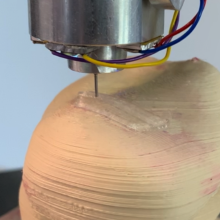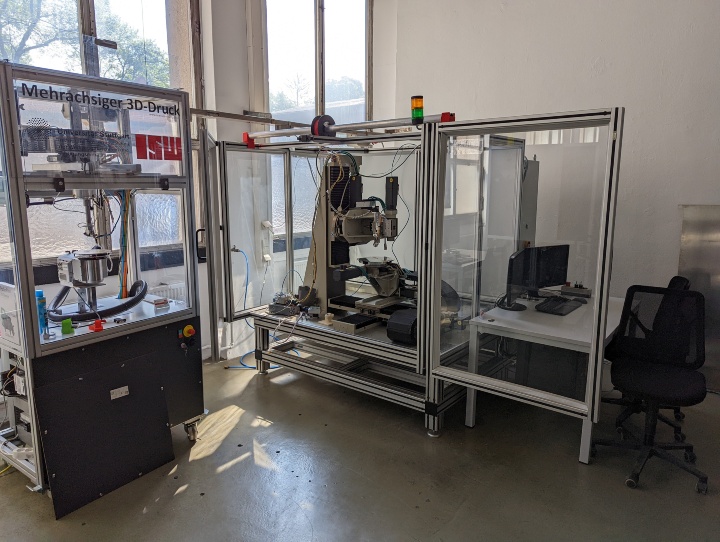Knee osteoarthritis is a widespread disease. Cartilage damage to the knee joint limits us both in sports and everyday life. Treatment with artificial cartilage tissue often helps. However, this can be problematic because the artificial tissue doesn’t always grow together particularly well. Researchers at the University of Stuttgart have successfully produced artificial cartilage tissue that can be individually adapted to the patient’s geometry and seeded with live cells.
The advantage of personalized cartilage tissue is that the tissue can be better adapted to the individual situation in the body, thereby increasing the chance of rapid adhesion. Patients are thus able to put weight on their knee much sooner and are free of pain more quickly. Scientists from the Stuttgart Partnership Mass Personalization (SPI-MP) research network at the University of Stuttgart are investigating how customizable biological bone-cartilage implants can be produced in an automated way from biomaterials.
Production of the personalized cartilage tissue
The cartilage is produced in a continuous processing chain using a special 3D printing process. Additive manufacturing processes are used to construct objects with a correspondingly complex geometry from different materials. The researchers thus rely on innovative multi-axis 3D printing for the complex production of the cartilage implants. The advantage of multi-axis machining over the conventional three-axis process is the greater process freedom. For example, it is possible to minimize the step effect that occurs when a contour of a component is not parallel or orthogonal to the build direction, thereby subdividing the slope into individual discrete layers.
The personalized data for 3D printing is obtained from MRI scans. Each chondron (functional unit of cartilage) can thus be individually produced according to biological models. For this purpose, a nominal geometry of the defect to be replaced is generated from the scan data. This geometry can be used to calculate spatially curved paths for the printing process.
What material is the cartilage tissue made of?
The material used to replace cartilage is a methacryl-modified gelatin solution, which is cured to make it UV resistant. In this biomimetic material, which was inspired by nature, cells grown in a bioreactor are dissolved before implantation.
About the SPI-MP research network
The Stuttgart Partnership Initiative – Mass Personalization (SPI-MP) research network at the University of Stuttgart conducts excellent basic research on fabrication and biomaterial technologies for personalized biomedical systems. The SPI-MP is part of the High Performance Center Mass Personalization (Leistungszentrum Mass Personalization; LZMP), a joint initiative of the University of Stuttgart and the Fraunhofer Institutes. The SPI-MP aims to increase networking between existing research initiatives at the University of Stuttgart and the performance center in order to prepare further projects and partnerships.
Expert Contact:
Janina Ulmer, University of Stuttgart, Managing Director of SPI-MP (Stuttgart Partnership Initiative – Mass Personalization), phone +49 173 3296627, e-mail



